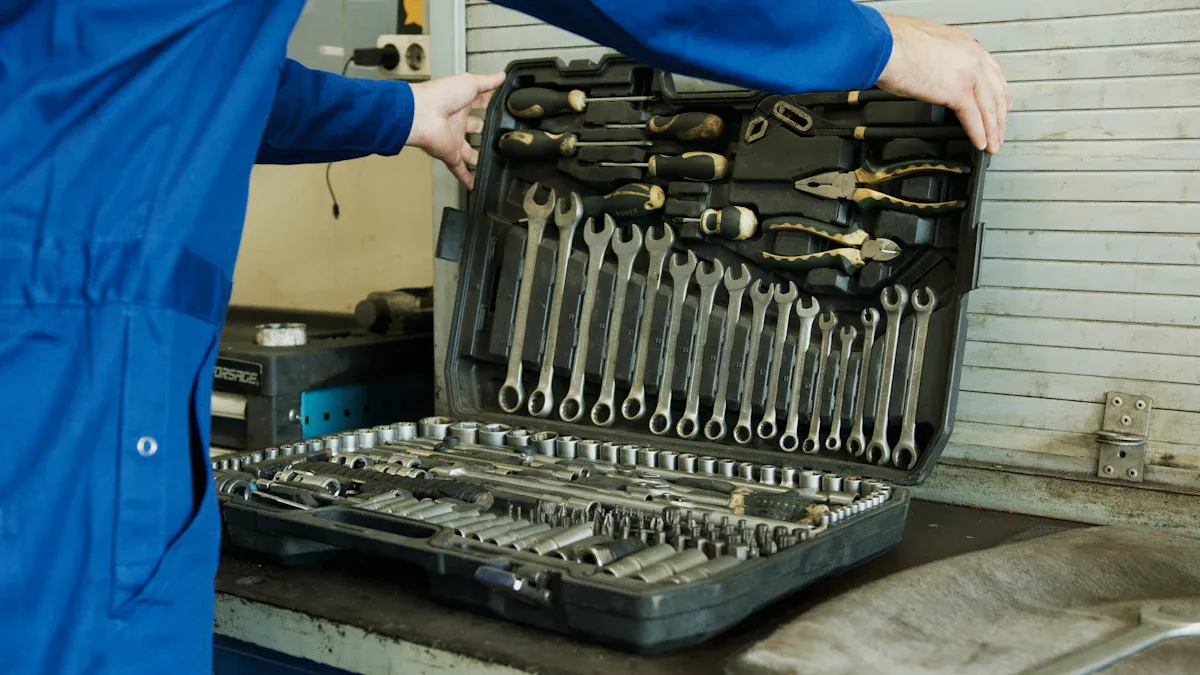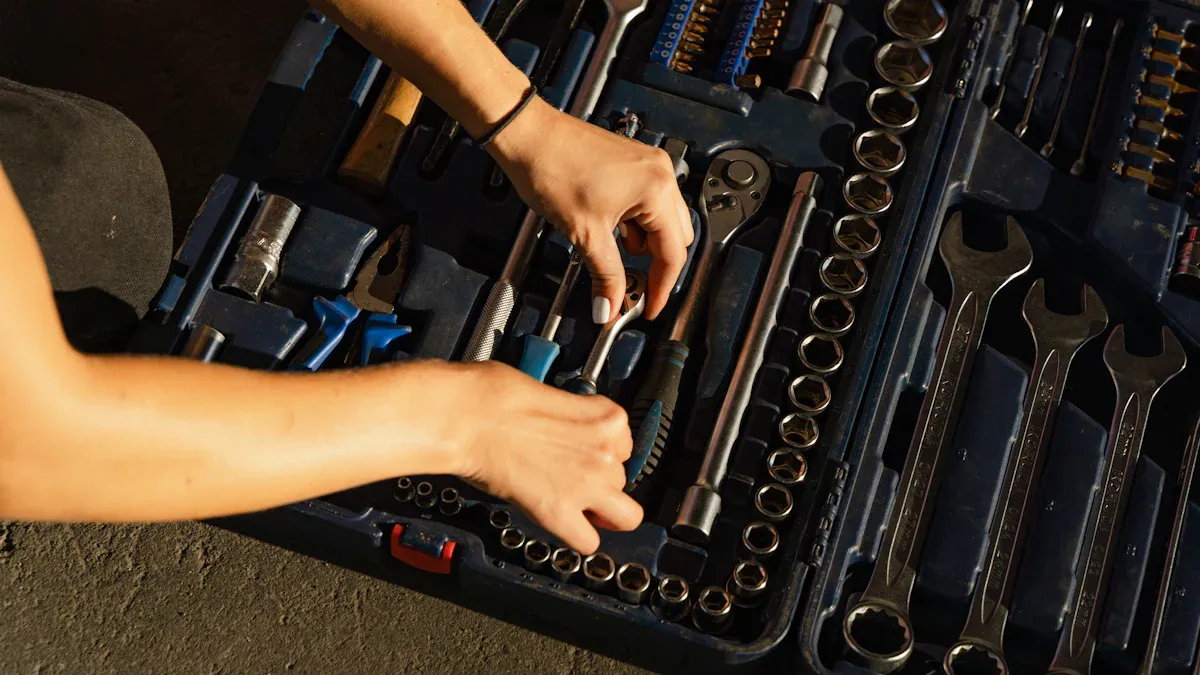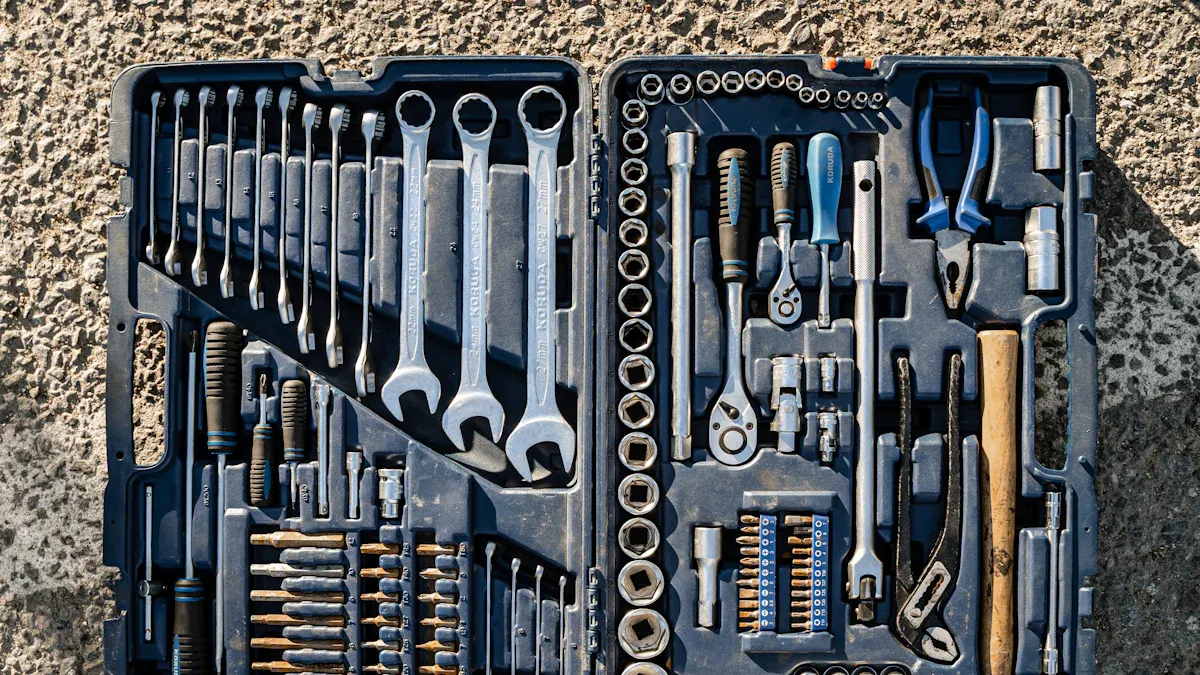
Technicians now depend on a tool magnetic tray to keep fasteners and small parts secure. Many call the Best magnetic tool tray for mechanics a game changer. A Magnetic Tool can prevent costly mistakes. Some use a Magnetic Bowl For Screws to organize workspaces and boost productivity.
Key Takeaways
- Tool magnetic trays keep small parts and tools secure and organized, helping technicians save time and avoid losing important items during repairs.
- Using magnetic trays improves workflow by making tools easy to find and access, which reduces delays and supports safer, clutter-free workspaces.
- Technicians should place magnetic trays within easy reach and make them part of their daily routine to boost efficiency and maintain consistent organization.
Tool Magnetic Tray: The Key to Instant Access and Time Savings

Grab-and-Go Efficiency for Technicians
Technicians value speed and reliability during repairs. A tool magnetic tray provides instant access to tools and parts, which helps them avoid searching through cluttered drawers or toolboxes. This grab-and-go approach keeps everything visible and within reach.
- Magnetic trays secure tools to metal surfaces, so technicians can grab what they need without delay.
- Small parts and fasteners stay organized, reducing the risk of losing them during a job.
- Tools remain in place, even when attached overhead or on a workbench, preventing them from rolling away.
- The tray’s design allows for quick identification and retrieval, which saves valuable time.
- Magnetic storage also cuts down on time spent replacing lost items.
This simple solution transforms the way technicians work, making every second count.
Streamlining Workflow in Auto and Electronic Repair
Industry reports show that magnetic parts trays improve workflow efficiency in both auto and electronic repair environments. These trays offer organized and ergonomic storage for metal tools and components. Technicians experience fewer interruptions because parts do not scatter or get lost. This organization supports quality control and helps maintain zero-defect standards.
Magnetic trays play a key role in lean manufacturing and error-proofing processes. Their compact and portable design fits well with mobile workstations and field servicing kits. As a result, technicians can move quickly between tasks, maintain a tidy workspace, and focus on delivering high-quality repairs. The growing use of tool magnetic trays in electronics assembly and repair reflects their value in supporting skilled labor and modern repair demands.
Reducing Downtime and Keeping Projects on Track
Case studies highlight how magnetic trays and tool boards help technicians keep projects on schedule. These trays hold metal tools securely, so nothing shifts or gets misplaced inside the toolbox. Technicians can find and access the right tool quickly, which reduces delays and keeps work moving forward.
Magnetic trays also allow for better organization by spacing out different tools and attaching them inside or outside the toolbox. Socket organizers with magnetic pockets keep small items like sockets secure and easy to find. These features help technicians avoid wasted time and maintain project timelines. Consistent organization and easy access to tools are critical for meeting deadlines and delivering reliable results.
Tool Magnetic Tray: Organization, Safety, and Real-World Impact

Preventing Lost or Misplaced Tools and Parts
Technicians often face the challenge of keeping track of small parts during complex repairs. A tool magnetic tray addresses this issue by holding fasteners, nuts, and bolts securely in place. The OTC 4490 Magnetic Parts Tray uses heavy-duty magnets and non-marring pads to attach firmly to metal surfaces. This design prevents tools and parts from slipping or falling, even when the workspace becomes crowded.
The Titan Mini Magnetic Parts Tray features a stainless steel dish and a magnetic base with a rubber coating. This combination keeps small parts secure and stops the tray from sliding, which helps technicians avoid misplacing items during repairs. Many trays also offer color-coded options, making it easier to sort and identify parts quickly.
| Feature | Explanation |
|---|---|
| Strong Magnetic Surface | Holds metal tools, bolts, nuts, and small parts securely to prevent rolling or sliding away. |
| Efficient Organization | Keeps small parts neatly arranged and easy to access during complex repairs. |
| Durability | Made from sturdy materials to withstand daily use and protect tools and parts. |
| Versatility | Can hold various metal tools and parts of different shapes and sizes. |
| Portability | Designed to be portable for use in different work environments. |
| Non-marring Base | Some trays have bases that prevent damage and keep the tray stable on metal surfaces. |
| Collapsible Design | Certain models fold for space-saving storage. |
| Color-coded Options | Helps in sorting and quickly identifying parts, reducing mix-ups during repairs. |
These features help technicians stay organized and reduce the risk of losing important components.
Enhancing Safety and Reducing Workplace Hazards
A cluttered workspace can lead to accidents and injuries. Tool magnetic trays improve safety by keeping tools and parts off the floor and work surfaces. When technicians use these trays, they reduce the chance of stepping on or tripping over loose items. The strong magnetic base holds tools in place, even when the tray is attached to vertical or overhead surfaces.
Some trays use non-marring bases, which protect delicate surfaces from scratches. This feature is especially important in automotive and electronic repair, where technicians work near painted or sensitive areas. By keeping the workspace tidy, magnetic trays help prevent workplace hazards and support a safer environment.
Tip: Place the tray within arm’s reach to minimize unnecessary movement and reduce the risk of dropping tools or parts.
Technician Testimonials and Success Stories
Technicians across the industry report positive experiences with magnetic trays. Phil Founier, owner of Phil’s Auto Clinic, describes how the Master Magnetics Magnetic ToolMat changed his workflow. He values the mat’s strong magnets and flexible shape, which allow it to attach to flat, curved, and even partially nonferrous surfaces. Founier notes that the mat holds tools and hardware firmly, preventing parts from falling and scattering—a problem he faced with previous trays.
He also highlights the mat’s portability and ability to keep wrenches and sockets close at hand, especially when working underneath vehicles. This real-world feedback shows how a tool magnetic tray can boost productivity and organization during vehicle tear down and reassembly.
Technicians in both automotive and electronic repair settings share similar stories. They find that magnetic trays help them avoid lost parts, keep their workspaces clean, and finish jobs faster. These testimonials demonstrate the practical benefits and real-world impact of using magnetic trays in daily repair work.
Tool Magnetic Tray: Practical Integration Into Your Workflow
How to Add Tool Magnetic Trays to Your Setup
Technicians can improve their daily routines by adding tool magnetic trays to their workspaces. The following steps help ensure a smooth integration:
- Evaluate the workspace. Identify areas where technicians use tools most often, such as workbenches, tool carts, or vehicle lifts.
- Select the right magnetic storage solutions. Use magnetic trays for small parts, magnetic battery covers for cordless tools, and magnetic holders for larger items.
- Make magnetic trays part of the daily routine. Return tools to their designated magnetic spots after each use. Perform end-of-day checks for misplaced tools. Encourage all team members to use the trays for consistent organization.
Tip: Place trays within easy reach to save time and reduce unnecessary movement.
Choosing the Right Tool Magnetic Tray for Your Needs
Selecting the best tool magnetic tray depends on the type of work and environment. Some trays offer high impact resistance, while others focus on holding capacity or rust resistance. The table below compares two popular models:
| Feature | VEVOR 4-Piece Magnetic Socket Organizer Tray Set | Genius Tools Magnetic Parts Tray Double – 2034 |
|---|---|---|
| Material | Reinforced ABS plastic | Premium-grade stainless steel |
| Durability | High impact resistance | High durability, rust resistant |
| Magnetic Base | Strong ferrite and CPE magnets | Powerful magnets, non-slip rubber base |
| Holding Capacity | Holds up to 108 sockets | Large, double tray design |
| Design | Color-coded for Metric & SAE | Double tray for increased capacity |
| Use Environment | Toolboxes, workshops, mobile carts | Harsh environments, stable on surfaces |
Technicians should consider their specific needs, such as the size of parts, workspace conditions, and frequency of use, before choosing a tray.
Technicians in 2025 rely on magnetic trays to keep workspaces organized and safe.
- These trays prevent lost fasteners, reduce clutter, and save time during repairs.
- Users report high satisfaction, noting improved workflow and fewer misplaced parts.
Upgrading to a magnetic tray helps technicians avoid common frustrations and work more efficiently.
FAQ
What materials do most magnetic trays use?
Most magnetic trays use stainless steel or durable plastic. Manufacturers often add rubber bases to prevent scratches and improve grip on metal surfaces.
Can magnetic trays hold non-metal parts?
Magnetic trays only secure metal objects. Non-metal parts require separate storage solutions, such as plastic bins or compartment organizers.
How do technicians clean magnetic trays?
Technicians wipe trays with a damp cloth. For stubborn debris, they use mild soap and water. Regular cleaning keeps trays effective and extends their lifespan.
Post time: Aug-06-2025
